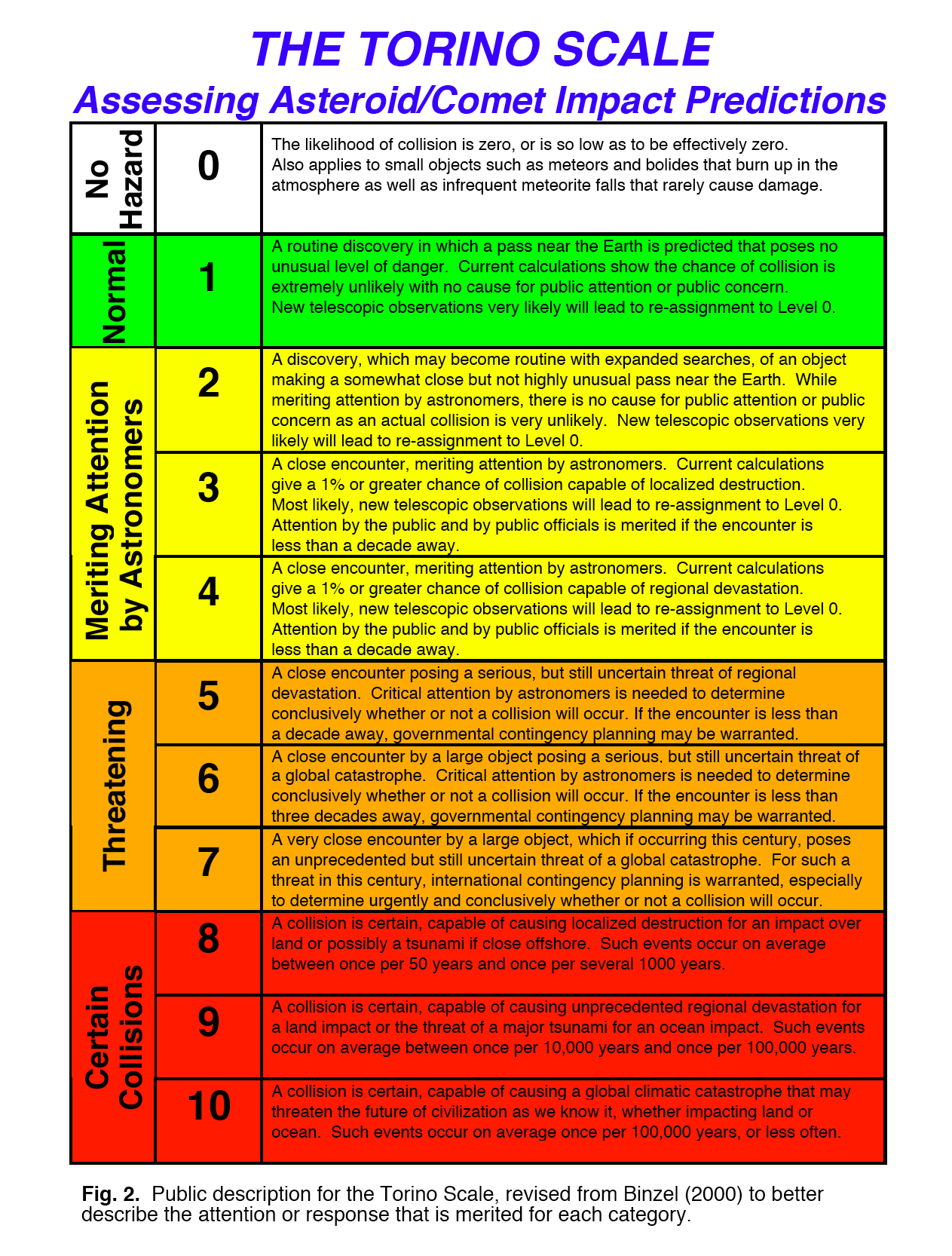|
|
Some say the world will end in fire, Some say in ice. From what I've tasted of desire But if I had to perish twice, I think I know enough of hate To say that for destruction ice Is also great And would suffice. Robert Frost, Fire and Ice |
Assignment:
Sign up for Observing Lab #3 Problem Set #10 is due next Thursday, 1 December. |
In Class:Meteors
Meteorites
Larger Impact Hazards
The Torino Scale
Impacts in History
|
![]()